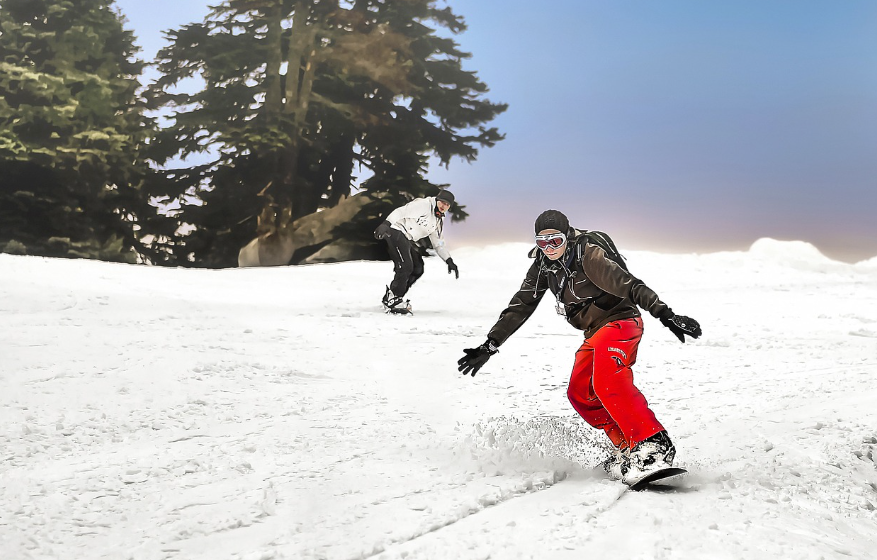Nestled high in the Swiss Alps, Saint Moritz is more than just a picturesque mountain town—it is a name synonymous with winter glamour, world-class sports, and alpine elegance. With a history steeped in winter tourism and two Winter Olympics under its belt, Saint Moritz is widely regarded as one of the birthplaces of modern winter sports. Whether you’re a seasoned skier, a curious beginner, or a spectator enchanted by snow-capped peaks and icy thrill, Saint Moritz offers something magical year after year.
But timing is everything. To truly soak in the charm and thrill of winter sports in Saint Moritz, it’s essential to know when to go. This article provides an in-depth guide to the best time for enjoying winter sports in this alpine wonderland, considering weather patterns, snow quality, crowd levels, festivals, and more.
Renowned as one of the most prestigious ski resorts in the world, Saint Moritz is a name that echoes sophistication and alpine excellence. From its crisp mountain air to its glistening white slopes, the town has long served as a playground for royalty, film stars, and elite athletes. But beyond the glamour, what truly defines Saint Moritz is its deeply embedded sporting culture—an unbroken thread connecting the 1928 and 1948 Winter Olympics to the thousands of enthusiasts who visit each year in search of powder-perfect runs and exhilarating experiences.
Yet, timing your visit is just as important as selecting the right skis or goggles. Saint Moritz transforms with the season—each month carving out a different rhythm in the snow. From the quiet calm of early winter to the bustling energy of high season and the sun-soaked slopes of spring, your choice of when to go can shape everything from the snow beneath your boots to the social scene you encounter. Whether you crave solitude or the buzz of global sporting events, knowing the ideal time to visit can elevate your trip from great to unforgettable.
A Brief Introduction to Saint Moritz’s Winter Appeal
Saint Moritz is located in the Engadin valley in southeastern Switzerland, perched at 1,856 meters (6,089 ft) above sea level. The town is globally recognized for its dry, champagne-like climate and consistent snowfall. Its reputation as a luxury ski resort attracts the crème de la crème of Europe, celebrities, royalty, and adventure-seekers alike.
Beyond traditional skiing and snowboarding, the town is known for its Cresta Run tobogganing track, frozen lake polo tournaments, snow kiting, and the extravagant White Turf horse races on ice. It blends high-octane adventure with a rich cultural and culinary scene—making it a complete winter destination.
Saint Moritz Weather and Snowfall: Understanding the Season
Saint Moritz’s winter season typically begins in late November and runs through mid-April, with the prime skiing months falling between December and March.
Here’s a breakdown of the key months and what they offer:
Late November – Early December: The Quiet Start
This is when Saint Moritz starts to awaken from its off-season slumber. The first snowfalls begin to blanket the valley, and ski lifts slowly open. While not all slopes may be functional yet, snowmaking machines ensure a decent layer for early-season skiing.
- Pros: Fewer tourists, cheaper accommodation, early-bird ski pass discounts.
- Cons: Limited runs open, unpredictable snowfall.
Ideal for those seeking a tranquil experience or training in less crowded conditions.
Mid-December to Early January: The Festive Peak
This is Saint Moritz in full sparkle—holiday lights, Christmas markets, and New Year galas. Snow coverage is usually excellent by now, and the atmosphere is electric. The slopes are busy, and so are the restaurants and chalets.
- Pros: Peak snow quality, vibrant nightlife, holiday charm.
- Cons: High prices, crowded slopes, limited last-minute availability.
Perfect for travelers who want winter sports served with a generous dose of festive cheer.
Mid-January to Late February: The Prime Window
This period is arguably the best time to enjoy winter sports in Saint Moritz. Snow conditions are optimal—deep, powdery, and consistent. The skies are often clear, allowing uninterrupted days on the slopes. Events such as the Snow Polo World Cup and White Turf horse races take place during this window.
- Pros: Top snow quality, plenty of sunshine, iconic sports events.
- Cons: Still relatively expensive, though less chaotic than the holidays.
This is the best window for serious skiers, snowboarders, and sport enthusiasts.
March: Sun and Snow Balance
March in Saint Moritz sees longer days and more sunshine. While snow starts to soften in lower areas, the higher altitude keeps the pistes in good condition. March is perfect for those who love to combine sunbathing at a mountain restaurant terrace with skiing runs in the afternoon.
- Pros: Warmer weather, great après-ski vibes, still decent snow.
- Cons: Snow can get slushy at lower elevations by late March.
Ideal for sun-seeking winter tourists, photographers, and foodies who also want to hit the slopes.
April: The Wind-Down
By early April, many ski resorts in Europe begin to shut down for the season. In Saint Moritz, however, the higher elevation means some runs stay open through mid-April. The crowds disappear, and the landscape shifts into a serene, post-winter calm.
- Pros: Fewer tourists, great deals on lodging, spring skiing vibes.
- Cons: Risk of poor snow quality, fewer activities and events.
Best for relaxed, late-season skiing and those looking for a quiet retreat.
Snow Conditions and Piste Variety
Saint Moritz boasts over 350 kilometers of pistes across its primary ski areas: Corviglia, Corvatsch, and Diavolezza. These cater to all skill levels, from beginner-friendly slopes to challenging black runs and off-piste terrains for the pros.
- Corviglia: Great for intermediate skiers and known for wide, sun-kissed slopes.
- Corvatsch: Offers nighttime skiing and powder-rich areas for advanced skiers.
- Diavolezza: Famous for glacier skiing and breathtaking panoramic views.
The snowmaking infrastructure ensures that even during less snowy winters, most pistes remain operational. Real-time snow depth and weather forecasts are available online to help you plan your trip.
Noteworthy Winter Sports Events in Saint Moritz
Saint Moritz isn’t just about skiing. The resort is host to several high-profile sporting events that attract international athletes and visitors.
1. Snow Polo World Cup (January)
Held on the frozen Lake St. Moritz, this unique event blends aristocratic sport with alpine style. Horses gallop on snow as luxury brands host exclusive parties in heated tents.
2. White Turf Horse Racing (February)
Another iconic frozen lake event where thoroughbreds race across the ice. Expect gourmet food stalls, betting booths, and high society in fur coats.
3. Engadin Skimarathon (March)
A cross-country skiing race that welcomes over 13,000 skiers annually. It’s a must-see for anyone interested in endurance sports.
4. The Cresta Run Season
Running from December through March, this skeleton toboggan track is not for the faint-hearted. Riders race head-first down a natural ice chute—a tradition dating back to 1885.
Attending these events enhances your Saint Moritz experience, even if you’re not competing yourself.
Saint Moritz Beyond the Slopes
Winter in Saint Moritz isn’t all adrenaline and speed. There’s a softer, luxurious side waiting to be explored:
- Wellness & Spas: Recharge at places like the Kulm Spa or Kempinski’s Alpine Spa.
- Gourmet Cuisine: From Michelin-starred restaurants to cozy alpine lodges serving raclette and fondue.
- Luxury Shopping: High-end boutiques from Chanel to Cartier line the snowy streets.
- Cultural Stops: Visit the Segantini Museum or the leaning tower of Saint Moritz.
Combining winter sports with these indulgences makes for a truly well-rounded trip.
Travel Tips and Insider Insights
- Lift Passes: Get a multi-day pass if you’re staying a while. You can also access the Snow-Deal system for early bird discounts.
- Accommodation: Book 2–3 months ahead for peak season stays. Hotels range from iconic luxury (like Badrutt’s Palace) to boutique alpine lodges.
- Transportation: The Glacier Express and Bernina Express offer scenic rail routes. For local commuting, the resort offers free shuttles to major lifts.
- Gear Rentals: Available in town with options for skis, boards, boots, and even luxury gear packages.
When Is Your Best Time?
Ultimately, the best time to enjoy winter sports in Saint Moritz depends on your personal goals:
- Want empty slopes? Early December or April.
- Craving social buzz and events? Mid-January to February.
- Budget travel with good snow? Late March.
- Looking to holiday during Christmas? Late December.
Each season brings its own flavor, but Saint Moritz never fails to deliver unforgettable winter memories.
Conclusion: A Winter Legend That Lives Up to the Hype
Saint Moritz is not just a ski resort—it’s an experience, a lifestyle, a tradition. Whether you’re carving down Corviglia, watching horses dash across frozen lakes, or sipping champagne after a long day on the slopes, the town offers a winter sports experience that blends adrenaline with elegance like nowhere else.
So when is the best time to enjoy winter sports in Saint Moritz?
The short answer: any time between December and March.
The better answer: when your spirit is ready for snow-dusted adventure and alpine luxury.
For those seeking not just sport but serenity, Saint Moritz in the quieter months offers a special kind of magic. The early and late seasons paint the mountains in a softer light—one where the rush of the crowd fades, and the natural beauty takes center stage. It’s during these less hectic periods that you truly come to appreciate the town’s timeless charm, the rhythmic hush of falling snow, and the gentle hum of ski lifts in the distance.
In the end, the true essence of Saint Moritz lies in its ability to offer something extraordinary to every visitor—be it the thrill of alpine sports, the indulgence of luxury, or the peace of snowy solitude. Choosing the right time simply ensures that the experience resonates more deeply with your desires. So, pack your gear, plan your dates, and prepare for a journey that blends adrenaline, culture, and refinement into an unforgettable winter tale.



